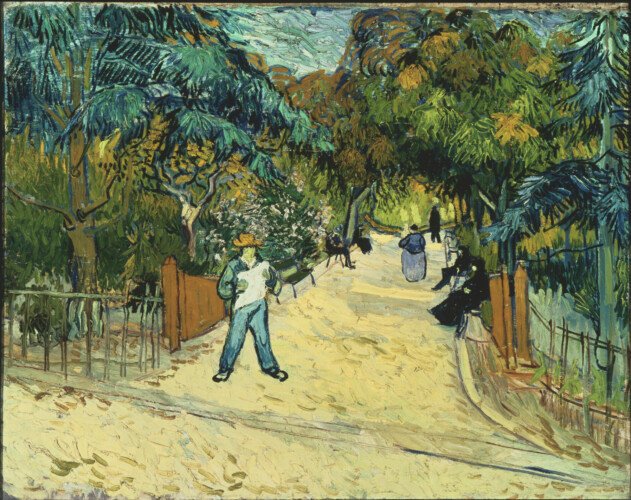‘A spectacular exhibition’: Vincent van Gogh at the National Gallery
By Charlie Stong
A spectacular exhibition featuring a huge collection of Vincent van Gogh’s artwork is now on display at the National Gallery in Trafalgar Square.
Celebrating the National’s 200th birthday, Poets and Lovers brings together more than 50 of the most-loved Van Gogh paintings from across the globe, some of which are rarely seen in public, including one of his Sunflowers paintings from Arles in France, which has traveled outside the United States for the first time since it was acquired in 1935.
Over a two-year period in the south of France, Van Gogh revolutionised his style in a symphony of poetic colour and texture. He was inspired by poets, writers and artists.

This once-in-a century exhibition looks at this time in Arles and Saint-Rémy as a decisive period in his career.
His desire to tell stories produced a landscape of poetic imagination and romantic love on an ambitious scale.
All the greats are here. There’s the awe-inspiring Starry Night over the Rhône (1888, Musée d’Orsay) and The Yellow House (1888, Van Gogh Museum), as well as the National Gallery’s own Sunflowers (1888) and Van Gogh’s Chair (1889), which were purchased in 1924.

The two Sunflowers are shown flanking La Berceuse (1889), his symbolic portrait of a woman with cradle cord, a very important loan from the Museum of Fine Arts in Boston, United States.
Months after he painted these pictures, while in Saint-Rémy, near Arles, Van Gogh discussed potential arrangements of them for display and sent a sketch to his brother, Theo, in a letter of late May 1889.
The gallery’s first exhibition devoted to Vincent van Gogh (1853-1890) is also the first anywhere to focus on the artist’s imaginative transformations.

Dwelling on Van Gogh’s time in Arles and Saint-Rémy in Provence (1888 -1890), the exhibition investigates the artist’s fascinating practice of turning the places he encountered into idealised spaces.
In Arles, for example, Van Gogh designated the public park in front of the Yellow House (in which, in 1888, van Gogh rented four rooms) as a Poets’ Garden, envisioning Italian Renaissance poets Petrarch and Boccaccio strolling there.
Some of Van Gogh’s most glorious paintings and drawings of the time are associated with this idea, and pairs of lovers appear in paintings such as Starry Night (Musée d’Orsay, Paris, 1888).

In May and June of 1889, after Van Gogh was admitted to the Saint-Paul-de-Mausole hospital in Saint-Rémy, he imagined the asylum’s overgrown garden as a secluded site for lovers. He painted spectacular compositions depicting views of the grounds.
The exhibition shows how this idealising, euphoric exploration of the asylum garden contrasts dramatically with works from the autumn when Van Gogh instead associated the very same location with his and his fellow-patients’ sufferings.
Tickets are like gold dust and the exhibition is sold out for many weeks.
But don’t fret – it runs until January and tickets can be booked for future dates at nationalgallery.org.uk.
Pictured top: Vincent van Gogh Starry Night over the Rhône, 1888 (Picture: Musée d’Orsay, Dist. RMN-Grand Palais / Patrice Schmidt)



